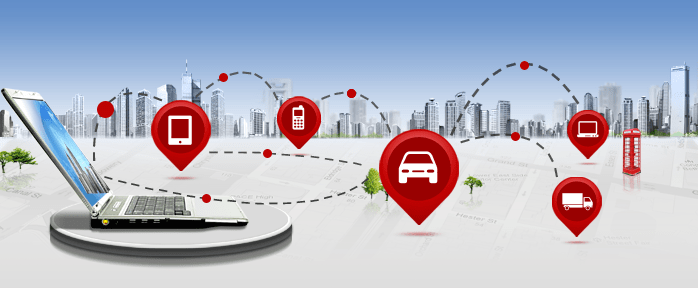Evolving technologies are the key solutions for the ever changing business challenges faced by industries globally. Machine-to-Machine (M2M) communication is one such futuristic technology that will have its impact in a global scale and play an effective part in improving the quality of human life.
Table of Contents
What is M2M?
M2M refers to the technology in which devices or machines exchange information (communicate) through wireless and wired systems and perform actions without having the need for manual assistance. In Machine-to-machine communications, a remote sensor which is attached to a machine or a device, gathers data and transmits them through a network to a central point which will often be a computer. At this stage the collected data is analyzed and utilized according to the needs.
Telemetry vs M2M:
The concept of M2M is similar to “telemetry” which is now considered to be the forefather of this advanced concept. Both M2M and Telemetry transmit data through sensor but the key difference between them is M2M communications uses existing networks, such as wireless networks (even wired networks and hybrid) while telemetry uses random radio signals.
What is Internet of things? What is the difference between IOT and M2M?
Internet of things (IOT) is a mechanism in which information of a person (or any living thing) or a man-made device is collected and transferred over a network without requiring a manual effort. In IOT, the ‘Thing’ refers to a person or a device tagged with a unique identifying system.
A tracking device tagged on animals for tracking their movements, built-in sensors of a car which alerts the driver when he/she falls asleep are a few examples for the easy understanding of IOT concept.
Difference between these two concepts is a happening topic among the futuristic technology experts these days. As far as our conclusion is concerned, the difference between M2M and IOT is that M2M only involves machines while the latter concept has communication between people and devices.
In simple words, M2M connects machines and establishes communication between them over networks, while IOT can go a step further to connect the physical world to digital world.
Benefits:
Going mobile:
The support of wireless networks provides more freedom in placing the sensor in much more remote places thereby contributing for a wider reach. The improvements made on sensing devices produce highly accurate and reliable inputs of the machines which they are connected to. Any fixed or mobile assets can be monitored and controlled easily.
Security and scalability:
Machine-to-machine communication systems offer high standards of security by providing industry standard encryption on both ends. Any number of M2M communications can be established inside a network or cross-networks and there is no confinement of sorts.
Reduces human effort and saves time:
M2M communication automates a monitoring process thereby limiting the need for a manual effort. You can monitor your assets (devices) from a remote location without making a personal visit to the site where it is located. This helps you in saving a lot of money, effort and time.
Sectors where M2M is successful:
Transport and logistics:
 The logistics and transportation industry is one among those services which operate 24/7. Transportations can be inter-city, inter-state, within a country or across the globe through air, sea or road medium. So keeping a track of all these mobile carriers is a tough challenge faced by fleet management and logistics companies. Time of delivery, theft threats and physical damages are the other tough challenges which make tracking of these carriers an essential one.
The logistics and transportation industry is one among those services which operate 24/7. Transportations can be inter-city, inter-state, within a country or across the globe through air, sea or road medium. So keeping a track of all these mobile carriers is a tough challenge faced by fleet management and logistics companies. Time of delivery, theft threats and physical damages are the other tough challenges which make tracking of these carriers an essential one.
Here, M2M solutions can be used to maintain a track of the physical location of the carriers (vehicles) and the goods it carries. Details about the location can be known at any point of time and alerts can be received in case if any damages happen or an unauthorized access is made.
Based on the constant updates of the fleet movement, fleet management companies can allot tasks effectively. Moreover driver behavior can also be monitored.
Security:
 Safe guarding valuable goods, assets and buildings is a tough task for any business owner as the set up of alarm systems and alerting mechanisms including, CCTV cameras, fire alarms, access door alarms and trespasser alarms consume a chunk of money and take much time to install. M2M which revolves on the wireless technology limits the usage of wired connections so that criminals do not have the advantage of breaking down the security system easily. Cameras and alarms connected to wireless monitoring systems can be fed to a central monitoring station so that immediate action can be taken if a theft attempt is made or a mobile asset is taking a wrong direction.
Safe guarding valuable goods, assets and buildings is a tough task for any business owner as the set up of alarm systems and alerting mechanisms including, CCTV cameras, fire alarms, access door alarms and trespasser alarms consume a chunk of money and take much time to install. M2M which revolves on the wireless technology limits the usage of wired connections so that criminals do not have the advantage of breaking down the security system easily. Cameras and alarms connected to wireless monitoring systems can be fed to a central monitoring station so that immediate action can be taken if a theft attempt is made or a mobile asset is taking a wrong direction.
Public services:
 Urbanization of towns and villages has given rise to the need of deploying interconnected and automated systems into public and private sectors which are the key responsible factors for improving the quality of life of its inhabitants. For instance M2M technology can be made use in public transportation systems which will help in optimizing bus schedules based on the demands of passengers. Moreover, real-time updates on the bus locations can also be provided for passengers, which will help them to plan their trip accordingly.
Urbanization of towns and villages has given rise to the need of deploying interconnected and automated systems into public and private sectors which are the key responsible factors for improving the quality of life of its inhabitants. For instance M2M technology can be made use in public transportation systems which will help in optimizing bus schedules based on the demands of passengers. Moreover, real-time updates on the bus locations can also be provided for passengers, which will help them to plan their trip accordingly.
Agriculture:
 Agriculture industry in India is facing numerous challenges since most of its systems are still manual. M2M communication can effectively reduce the human effort thereby saving time and money. M2M communication will prove helpful in getting instant feeds on livestock, warehouse management of agricultural goods, automated irrigation methods, monitoring barn and poultry house.
Agriculture industry in India is facing numerous challenges since most of its systems are still manual. M2M communication can effectively reduce the human effort thereby saving time and money. M2M communication will prove helpful in getting instant feeds on livestock, warehouse management of agricultural goods, automated irrigation methods, monitoring barn and poultry house.
Mobile M2M market:
The mobile M2M market for sure is the future of the code considering the ever-increasing need for automated communication systems between machines in various industries. Especially transportation, logistics, consumer electronics, health care, energy and automotive industries will drive M2M wireless technology which will in turn create massive opportunity for wireless service providers.
IDATE, a European research firm has reported that M2M communications market could generate $53 billion globally which is $20 billion more than the figure in 2013 while the M2M module deployment is expected to skyrocket from 175 million to 470 million.
Evolution of the next-generation 4G technology is also a promising sign for the future of M2M communications. Improved speeds, increased coverage range and greater throughput will make M2M communications much more effective for industries which need to deploy this technology on a large scale.






M2M communication is an interesting as well as complex sector. Eventhough it has a wider oppurtunity in future M2M adoption is the high costs associated with it.
You are right Henry, however as the technology evolves and the cost associated with it falls we can see a major role of M2M communication in various business sectors.
Interesting post on M2M communication. This technology is set to go higher in near future
Thanks for your thoughts Emma and you are right as well.
I like this portion being narrated : What is Internet of things and the difference between IOT and M2M?